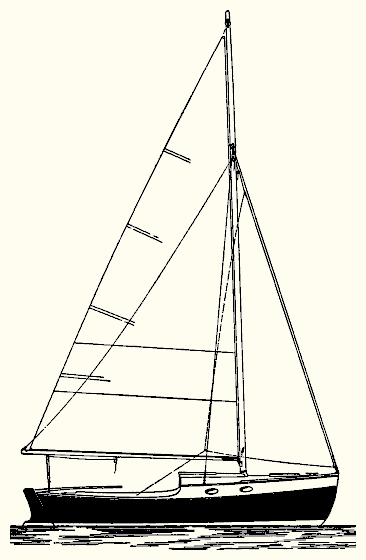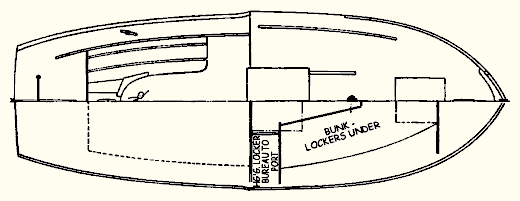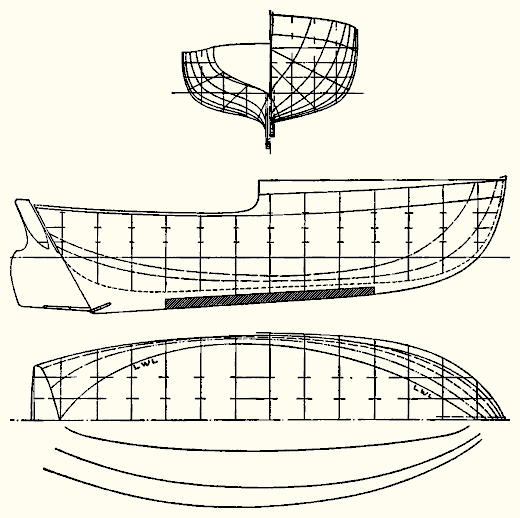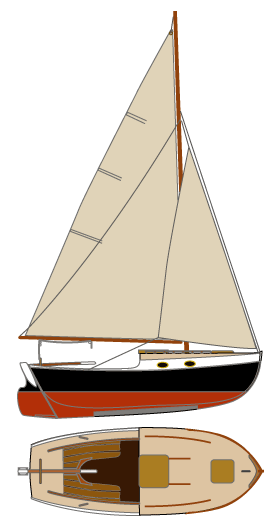

The design this month shows an 18 foot 2 inch overall, 16 foot water line, 6 foot 11 1/2 inch beam, and 2 foot 3 inch draft round bilge raised-deck cruising knockabout. From keel to mast truck the boat features simplicity; and simplicity in any product is the ear-mark of economical production.
The plans show staysail and jib-head main; the area of the latter is 170 square feet, and of the former 64 square feet, total area 234 square feet. The standing rigging is simplicity itself; a headstay with a single shroud both sides. The mast, of course, is properly stepped on the keel and should a turnbuckle let go the mast will not go by the board, nor will those aboard run the risk of injury.

The deck plan shows a forward deck 9 feet 7 inches long, a cockpit 6 feet 1 inch long and an after deck 2 feet 6 inches long. There is a hatch in the fore end of the deck; very necessary this for more than one reason, and generously proportioned companion doors and slide. The cockpit is not of self-draining type. A continuous seat, with slatted tops, extends around the after part of the cockpit. There is a step-down into the cabin. The cabin is arranged with a small bureau to port and a locker on the starboard side, two berths having lockers beneath, and small fore-peak for stowage of ground tackle. The headroom under the companion slide is 4 feet, and comfortable sitting room under the raised deck.

Happy Time is a round bilge boat of raised deck type. The forward underwater sections all are of convex form; those abaft station 6 show S curves fairing into the keel and deadwood at the rabbet line. The bilges are firm, presaging excellent stability. The draft to the heel of the keel is 2 feet 3 inches. With 580 pounds of lead ballast on the keel and some 300 pounds inside the little knockabout will be unusually stiff and prove an excellent sail carrier. The freeboard at the bow is 3 feet 1 1/2 inches; at the stern, 2 feet 1 inch, therefore Happy Time will be dry when pushed in rough water. The drawings of the body plan show generous flare, a feature always associated with dryness.

For power the best solution is an outboard motor. One of about 5 h.p. should be ample and I think you will find that a metal outboard bracket similar to the Savage will be most satisfactory. I would not advise cutting a well for the outboard's propeller in the bottom of a round bilge boat. Water will burble into this to the disadvantage of the motor's performance.
